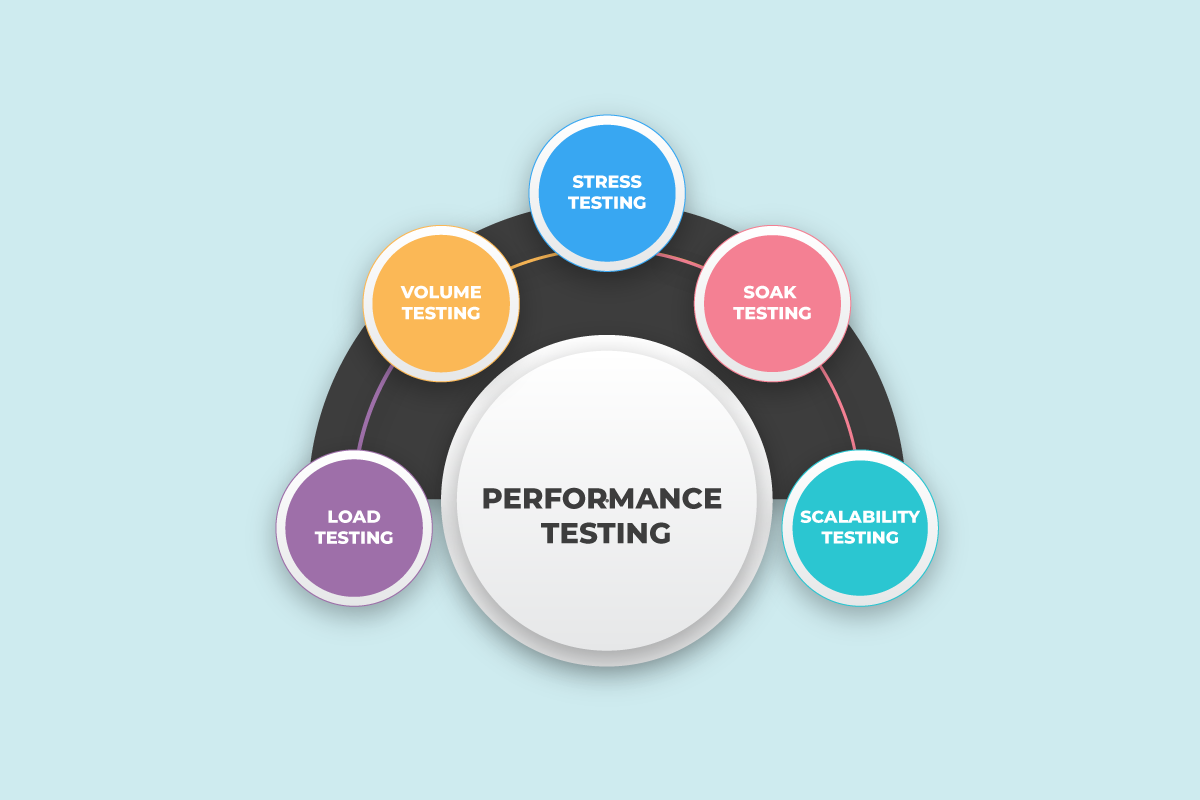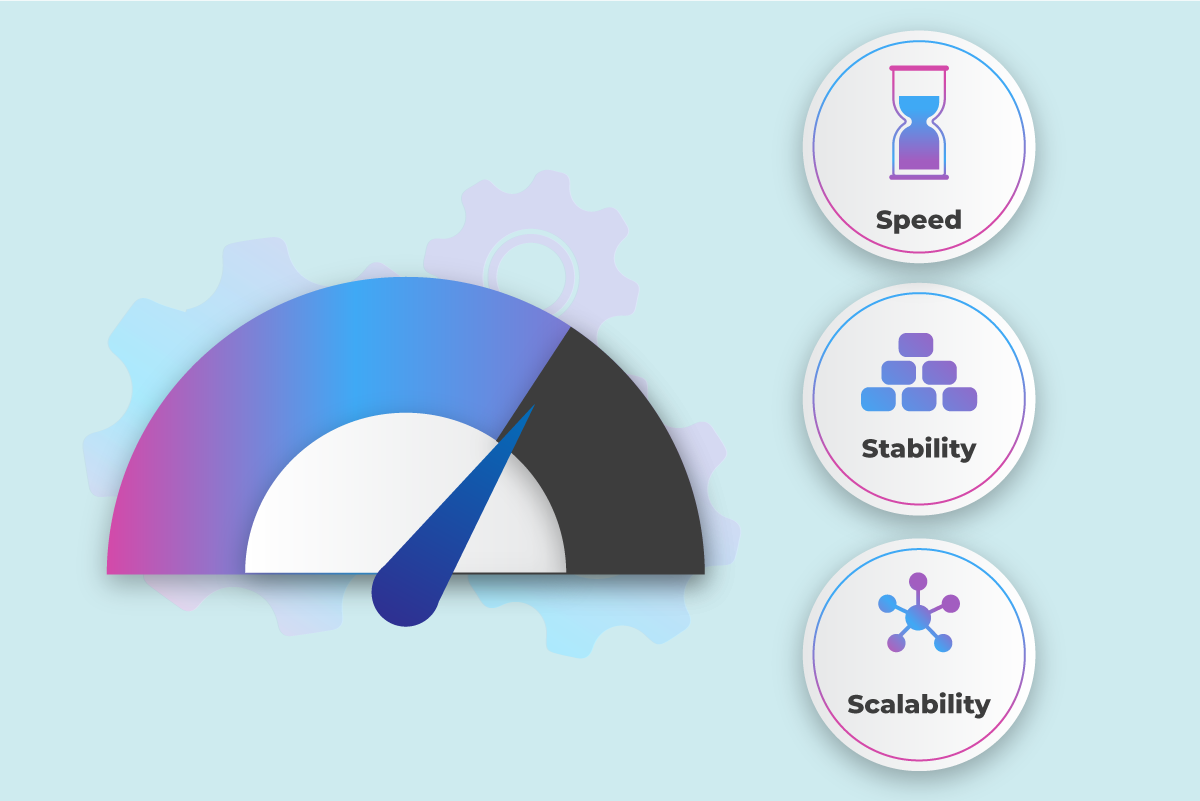
The software development industry has grown by leaps and bounds; with it, its processes have also had to adapt to the new demand for software products. Today we can find all these software products in entertainment, healthcare, automotive, home, etc., where the software must run without interruptions. For example, in the medical area, a respirator must be programmed to be available whenever needed. To achieve this, the products must pass exhaustive performance tests that validate that the task can be completed.

Load tests: The number of active users at the same time is continuously increasing. Hence, the system load and the application's behavior are checked under those conditions. When the system performs well under heavy load, the application's response time and staying power are also monitored.
Stress tests: Their objective is to check the software's stability outside the bandwidth's capacity.
Spike tests: Evaluate the weakness of the application through extreme increases and decreases in load. In this way, we evaluate the system's behavior in case of a sudden change in load volumes in short periods. As a result, you can minimize application problems caused by poor system performance.
Resistance tests: Usually carried out to check the behavior of a system with an expected load for an extended period. We let the system run longer than expected to test its endurance. During this test, we highlight issues such as system crashes, random behavior, and memory leaks to fix and prevent them from occurring in the future.
Scalability tests: Test the application's ability to scale user traffic, number of transactions, and volume of system data, as well as determine the scaling peak. Once the maximum load is found, we ensure the system is scalable.
Volume tests: We test the application's performance under various database volumes to verify that it can support them. We also measure the response time and the number of users working simultaneously on the system. We confirm that your software can be used in the real world.
Performance tests are non-functional tests that should be treated equally as functional tests since they complement each other. It is not very useful for a product to have passed its functional tests if it is unavailable at the time of use. Therefore, a performance testing phase is necessary to confirm that the product fulfills its objective and that specific, legal, contractual, or standard requirements are met within an organization.
The performance tests' objective is to determine the system's performance under a workload defined by the client or the type of business. There are various performance tests, such as load, stress, and stability tests.
Here are some recommendations when executing these tests:

The main benefit of these software tests is an increase in quality because they ensure that a product works correctly and is also available when required.
Here is a list of other benefits:

Cost savings is one of the benefits of performance testing. These tests also facilitate changes to advance development with adequate performance. Remember that out-of-scope modifications can result in delays and, therefore, loss of money
A product that has passed its performance tests can satisfy the needs for which it was created, thus increasing both its quality and confidence in the development that was carried out.
In conclusion, performance tests are essential in software development to avoid problems with availability or performance.
Including a performance test phase in the test plan is necessary to save time and money. The result will be a high-quality software product that will meet its functional objective with the required availability.